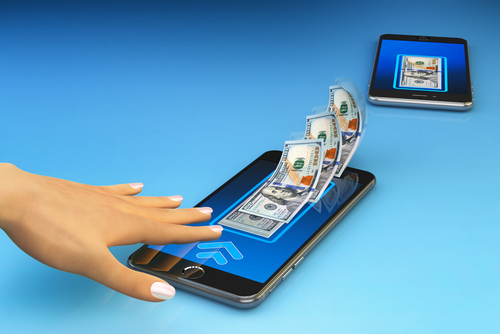The evolution of the world’s money payment and transfer methods (from the perspective of individuals) has developed drastically over the decades. Throughout the evolution, there has been four different phases.
Barter, the first phase, extended from 9000 BC up until 600 BC. In this process, goods were exchanged directly between people. This system, however, had limitations like the difficulties of carrying goods and transporting them across long distances to make exchanges. Because of these limitations, people transitioned into phase two which was using commodity money. Some popular examples of commodity money are gold or silver. An interesting theory about that time period states that Roman Soldiers were paid their salaries in salt. Even though this theory has not been confirmed to be 100% true, salt was one of the most important commodities in ancient times. The third phase started around 600 BCE, when coins were introduced in Lydia, or today’s Turkey. After that, it took around 2000 years for paper money to appear. The Chinese people were the first to use paper money or what was called the “flying cash” of the Tang Dynasty in the 800’s. After that, in the early 1600’s, the first European banknote was printed in Sweden. In 1891, American Express offered the first traveler’s check. Technological advancement in 1900’s started to have drastic effects on the industry. This lead to the creation of the first credit card in 1946, the first plastic credit card in 1959, first ATM in 1967, and most importantly in 1994, the introduction of the EMV credit card standard— which stands for Europay,Mastercard,Visa. — EMV cards are the smart cards or chip and pin credit and debit cards. The fourth and final phase includes mobile phones providing a payment solution in developing countries, apps providing banking services in developed nation, the dot-com boom (1995–2001), the rise of e-commerce companies (like paypal) which started the trend of complete digitization of cash transaction, and the ability to touch pay with credit cards. In the 2000’s plastic cards have been replaced by e-wallets or virtual cards. In addition, the creation of bitcoin as a decentralized currency in 2009 which is being used as a type of payment or money transfer shows the new wave that we are going to see in the future.
In the meantime, new technologies are changing industries extremely fast, the rise of AI is changing client experience, and consumers are expecting free instant transfers and payments. This is where RTGS or Real Time Gross Settlement becomes crucial. RTGS allows for transactions between banks to happen in real time and settle on a one-to-one basis. This is to be contrasted with batch transaction where banks settle the net amount owed at a pre-determined interval such as the end of the day or the week like in most developing countries. The process of moving from batch transactions to RTGS transactions is based on two steps. The first is technological capacities, which are rapidly growing and have become more robust and scalable. Secondly, customer expectation of instant delivery. Just like people changed their perception of delivery when they started using email instead of letters or mail, the same is happening with payments.
RTGS can have great impact on FinTech companies. One example can be seen in peer to peer payment apps (like venmo in the US.) Venmo charges $0.25 fee for instant (RTGS) deposits and free of charge for standard deposits (batch transactions) that take 1–3 days. The next step with RTGS will be to process real time payments for free, this will become an important competitive advantage for companies to deliver a better user experience.
Another example shows how closely RTGS is linked with the development of the peer-to-peer lending industry in the UK. In my opinion, peer-to-peer lending advantages outweigh the disadvantages. Peer-to-peer lending is seen as a method for people to borrow funds when they’re not credit worthy, or when banks do not want to lend them. However, another view on the industry has shown that one of the core benefits of peer-to-peer lending, is not so much on the credit worthiness or the interest charged on the loan, but it’s the speed at which the loan is being delivered on to the bank account. Once a person is authorized to get the loan, the money is instantly deposited to their account. People are willing to pay higher interest rates on their loan just for speed and convenience, which shows the importance and expectations of RTGS.
Recently, the Bank of England has opened the RTGS system to non-bank Payment Service Provider. Not only this, but this schedule of reform planned for the UK will also include how Blockchain and API or Application Programming Interface can be interfaced with their RTGS systems. In other words, RTGS represent a critical infrastructure layer supporting FinTech innovation. Even though it can’t directly be seen as it operates in the background and serves as a payment rail. Payments and money deposits are constantly evolving, even more rapidly today which is why it is one of the most exciting industries.

